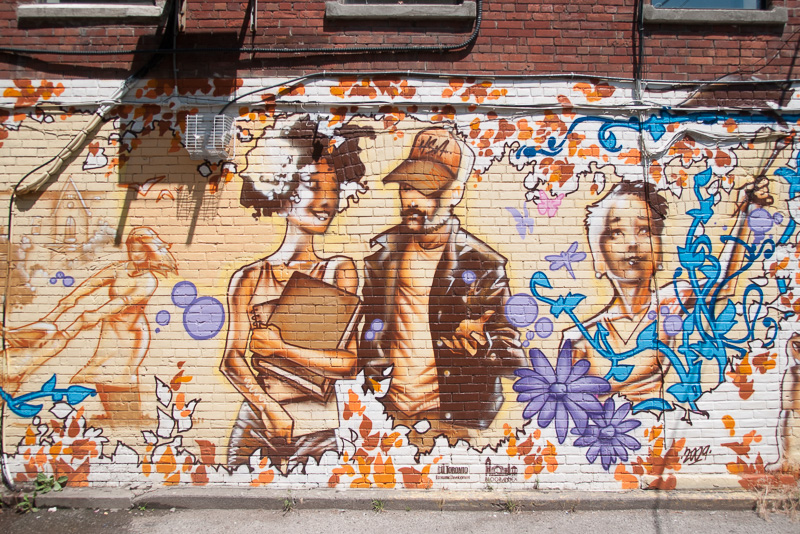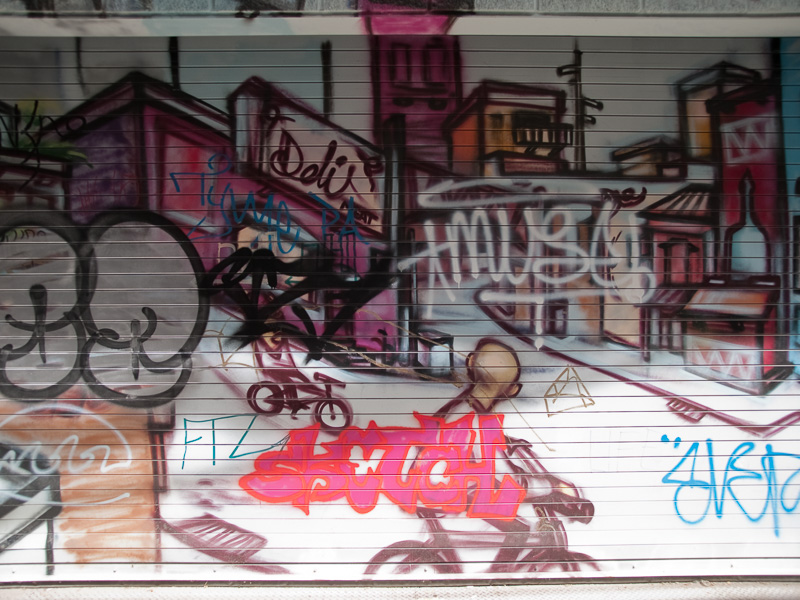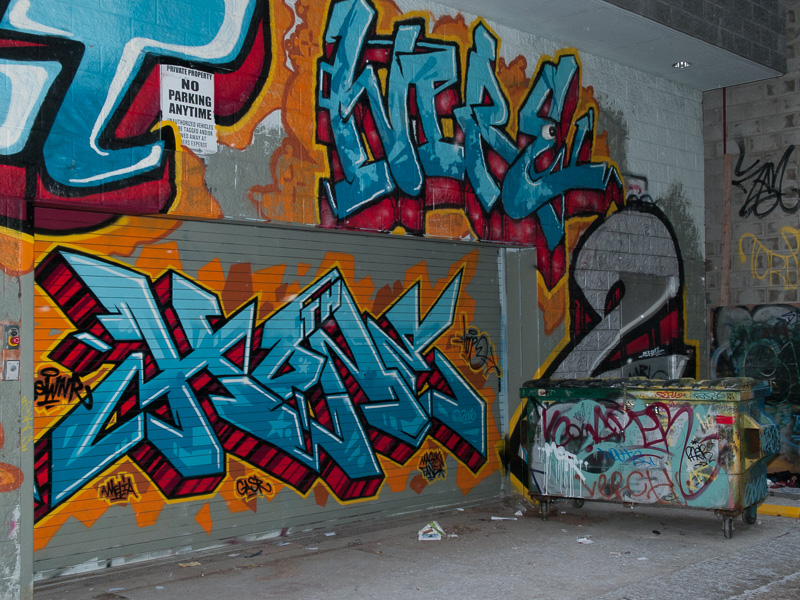Toronto’s new mayor, Rob Ford, wants his city to be a graffiti-free zone. Back in October, when he was still just a candidate, he spoke to the Board of Trade about how he wanted Toronto to be clean and safe, how he wanted Toronto to sparkle for the 2015 Pan Am games, how he wanted Toronto to be as friendly to businesses as a hooker to Johns on Jarvis Street. Maybe not in those words. What he said was that he would put businesses on notice that they had 30 days to clean up tags on their walls or else the city would clean it for them, presumably at their expense. Now that Ford is the big cheese, he’s revisiting some of that talk. Calling him a neat freak, the National Post reported it like this:
He has also asked Jim Hart, in charge of the city’s municipal licensing and standards division, to give commercial property owners a “30-day heads up” that they have to clean their buildings, or the city will, at a cost.
I’m not sure what kind of system Ford is contemplating. It almost looks like he’s trying to offload clean-up costs onto private enterprise. More on that in a minute, but first, let’s look at some of Ford’s assumptions.
1. Graffiti = Crime
Ford doesn’t want the streets to be clean. He wants them to be clean and safe. Where is the evidence that the presence of graffiti means the streets are dangerous? I guess there’s the argument that tags are put there by gangs to mark territory. In fact, most of the graffiti on Toronto’s streets (really, it’s on the walls) is not tagging. And as for the tagging, where’s the evidence that it was put there by gangs? Who’s done the research? A more interesting question is this: why does the highest concentration of graffiti circle around OCAD (the Ontario College of Art and Design)? If anything, I’d say Graffiti = Art.
2. This is a business issue.
According to Ford, the presence of graffiti is bad for business. Hmmm. I thought it was people who elected him. And while Toronto is a place where people do business, it’s also a place where two and a half million of Ford’s constituents make their home. Doing business is the least part of what it means to live here. As is true in any home, the people here make plans and dream of the future. They mourn for what they have lost. They argue, often passionately, for the things they care about. They make love. They seek out companionship. They have fun. They sometimes struggle with loneliness. They raise families. Graffiti is a reflection of that wider life which Mr. Ford has been elected to serve.
So, for example, one of the many reasons for graffiti is to memorialize the death of friends:
Another of the many reasons for graffiti is that we can’t live without art. We all have an innate aesthetic hunger. Those of us fortunate enough to have a roof over our heads like to decorate the walls of our homes with paintings and photos. Those who don’t have a home, don’t give up that aesthetic hunger. Graffiti makes a street more bearable when that becomes home. In the image below, you can see where someone has laid their head, at least for a time.
Unfortunately for Ford, it isn’t really true that graffiti is bad for business. Otherwise, the city of Toronto wouldn’t be offering up public walls like this one near Bathurst & Bloor. And businesses like Evergreen wouldn’t be preserving graffiti murals as part of their development projects. I expect graffiti is bad for some businesses. I wouldn’t want to run a bank with some of this stuff on my front windows. But if my business required me to create interesting spaces for people to gather, graffiti might be very good for business. And isn’t that exactly what the Pan Am games demand: interesting and inviting spaces for people?

Perverse Incentive
As I read it, Rob Ford intends to hold commercial property owners accountable for cleaning up graffiti. If the graffiti isn’t gone within 30 days, then city crews come in and do the cleaning for them. And then what? Who bears the cost? If it’s billed directly to the property owners, this creates a perverse incentive. It encourages commercial property owners to act as anti-graffiti enforcers on behalf of the city. At present, property owners have the option to ignore graffiti. If they can’t afford to remove it, or view removing it as futile, they can pretend it doesn’t exist, or they can even embrace it. But if Ford regulates that option into thin air, it is conceivable that frustrated property owners could vent that frustration on graffiti artists in ways that are less than healthy.
It may well be that Ford intends to impose an impossible burden on commercial property owners. Is it even possible to prevent graffiti? In June, I took a photo of a garage door. Last week I took another photo of the same door. It looks like the first mural was grey-washed. Evidently, it doesn’t take long for new murals to pop up.
We have in public office what is known as a Philistine. He would turn Toronto into a bland and uninteresting city, indistinguishable from any other bland and uninteresting North American city. I intend to do my bit to document what we will lose if he has his way.

